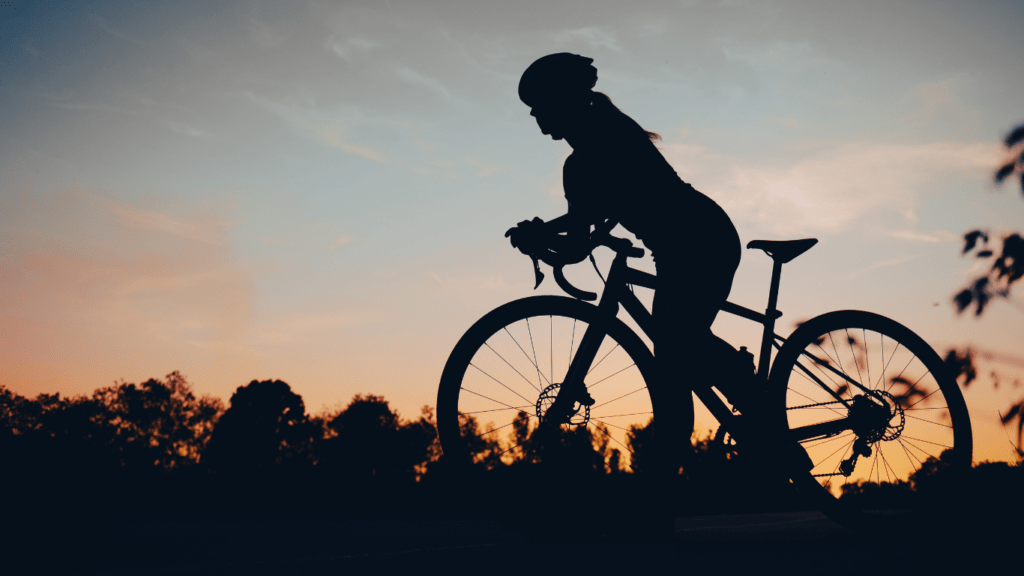Understanding Your Riding Needs
Choosing the perfect bike starts with understanding your riding needs. Different riding styles require different bike types. Knowing what you want can make the selection process easier.
Types of Biking: Road, Mountain, and Hybrid
Understanding the different types of biking will help you choose the right bike. Each type is designed to cater to specific riding conditions.
- Road Bikes: These are designed for speed on paved roads. They’re lightweight, have thin tires, and typically feature drop handlebars. Ideal for commuting and long-distance rides.
- Mountain Bikes: Built for rugged terrains, these bikes have wide tires, strong frames, and suspension systems to handle uneven surfaces. Perfect for off-road trails and rough paths.
- Hybrid Bikes: Combining features of road and mountain bikes, hybrids offer versatility. They have medium-width tires and a comfortable riding position. Suitable for city commuting and light trail riding.
Assessing Your Riding Goals
Knowing your riding goals helps narrow down your bike choices. Consider the following:
- Commuting: If you’ll use your bike for daily commutes, a road or hybrid bike is ideal. Ensure it can carry essential items like bags or groceries.
- Fitness: For fitness enthusiasts focusing on cardio workouts, a lightweight road bike is suitable for long rides. It offers higher speeds and efficiency.
- Adventure: Planning to explore mountain trails and rugged paths? Opt for a mountain bike with durable components and good suspension.
- Recreation: For leisurely rides in parks or around the neighborhood, a hybrid bike provides comfort and ease of use with its upright position and versatile design.
Understanding your riding needs ensures you choose a bike that enhances your experience. Always match the bike type to your specific goals and terrain preferences.
Important Features for Beginners

Beginners should consider several key features when selecting their first bike. Understanding these components can help make an informed decision.
Frame Materials
Frame materials affect weight, durability, and ride quality. The most common options are:
- Aluminum: Lightweight, affordable, and rust-resistant. It’s a popular choice for beginners due to its balance of performance and cost.
- Steel: Durable and provides a smooth ride. While heavier than aluminum, it’s more comfortable for longer rides.
- Carbon Fiber: Lightest and most expensive. It offers excellent ride quality but isn’t necessary for beginners due to its high cost.
- Titanium: Combines the strengths of steel and aluminum. It’s rust-resistant, durable, and offers a smooth ride, but it’s also pricey.
Brake Types
Brakes are crucial for safety and control. Common brake types include:
- Rim Brakes: Lightweight and affordable, but less effective in wet conditions.
- Disc Brakes: Available in mechanical and hydraulic versions. They offer superior stopping power in all conditions.
- Mechanical Disc Brakes: Easier to maintain and adjust, though slightly less powerful than hydraulic brakes.
- Hydraulic Disc Brakes: Require less effort to activate and provide stronger braking, but they need more maintenance.
- Coaster Brakes: Simple and found on many beginner bikes. They offer a clean look but aren’t as effective for varied terrains.
Choosing the right frame material and brake type can significantly enhance the biking experience, especially for those just starting. These components directly impact comfort, performance, and safety.
Sizing and Fit
Selecting the right bike size and ensuring proper fit are critical for comfort and performance. A well-fitted bike helps prevent injuries and makes riding more enjoyable.
How to Measure a Bike Size
Accurate bike size measurements are essential for finding the right fit.
Measure your inseam by standing against a wall with your legs 6-8 inches apart, using a book or ruler to measure from the floor to your crotch.
Note this measurement. For road bikes, multiply your inseam by 0.67 to determine the frame size in centimeters. For mountain bikes, multiply the inseam by 0.685.
Example:
- Inseam: 32 inches
- Road bike: 32 x 0.67 = 21.4 inches (54 cm)
- Mountain bike: 32 x 0.685 = 21.9 inches (55 cm)
Consider the manufacturer’s size chart since sizing can vary between brands.
Adjusting Your Bike for Comfort
Ensure optimal comfort by adjusting several components. Set the saddle height so your leg is almost fully extended at the bottom of the pedal stroke.
Adjust the saddle angle to be level, avoiding tilt to prevent discomfort. Handlebar height should be set so your arms are slightly bent and relaxed, not overstretched. Proper adjustment reduces strain on your back and shoulders.
- Saddle height: Hip level when standing next to the bike
- Handlebar height: Lower or level with the saddle for road bikes; higher for mountain bikes
Budget Considerations
Setting a budget is crucial when choosing your first bike. It helps narrow down options and ensures you get the best value for your money.
New vs. Used Bikes
Deciding between new and used bikes can affect your budget significantly. New bikes offer the latest technology, warranties, and support from manufacturers.
For example, an entry-level road bike might cost around $500-$1,000, whereas higher-end models can exceed $5,000. Used bikes, on the other hand, are more affordable options, often available at half the price of new ones.
They provide the opportunity to get a better quality bike within the same budget constraints. However, used bikes may come with wear and require potential repairs.
When considering a used bike, checking the bike’s condition, service history, and any potential additional costs for repairs or upgrades is crucial.
Essential Accessories and Their Costs
After purchasing a bike, several accessories are necessary for a complete setup. Basic items include a helmet, lock, lights, and a pump.
- Helmet: Prices range from $30 to $200, with safety being the main factor.
- Lock: A solid lock costs between $20 and $100, offering theft protection.
- Lights: Essential for visibility, prices can vary from $15 to $80.
- Pump: Necessary for maintaining tire pressure, costing around $20 to $50.
Other accessories might include padded shorts ($50-$150), gloves ($10-$60), and water bottle cages ($5-$25). These items improve comfort and ensure safety while riding. Including these costs in your budget ensures you’re fully prepared.
Considering these budget elements helps in making a well-informed decision, aligning your purchase with financial constraints and riding needs.
Where to Buy Your First Bike
Purchasing your first bike involves choosing the right place to buy it. Different options present various advantages depending on your priorities.
Local Bike Shops vs. Online Retailers
Local bike shops offer personalized service and expert guidance. Staff can help fit you with the right size and type of bike. Test rides let you experience the bike before purchasing.
Local shops also provide maintenance services, often including free initial tune-ups.
Online retailers offer convenience and a wider selection. Prices might be lower, and you can compare multiple models and brands easily. However, assembly might be required, and test rides aren’t an option.
Read reviews and check return policies to ensure a satisfactory purchase.

 I’m Brendamee McCartyierr, and as the founder of Cycle Smooth Ride Long, I'm thrilled to bring you the ultimate resource for all things cycling. Whether you're a seasoned rider or just starting on your cycling journey, our mission is to support your passion for two wheels with trusted advice, insightful reviews, and expert tips.
Cycling is more than just a hobby—it's a lifestyle that promotes health, freedom, and adventure. At Cycle Smooth Ride Long, we’re committed to making your ride smoother, longer, and more enjoyable by providing you with the latest in cycling news, nutrition advice, fitness tips, and gear reviews. We also cater to beginners, offering comprehensive guides to help you get started and build confidence on the road.
I’m Brendamee McCartyierr, and as the founder of Cycle Smooth Ride Long, I'm thrilled to bring you the ultimate resource for all things cycling. Whether you're a seasoned rider or just starting on your cycling journey, our mission is to support your passion for two wheels with trusted advice, insightful reviews, and expert tips.
Cycling is more than just a hobby—it's a lifestyle that promotes health, freedom, and adventure. At Cycle Smooth Ride Long, we’re committed to making your ride smoother, longer, and more enjoyable by providing you with the latest in cycling news, nutrition advice, fitness tips, and gear reviews. We also cater to beginners, offering comprehensive guides to help you get started and build confidence on the road.
